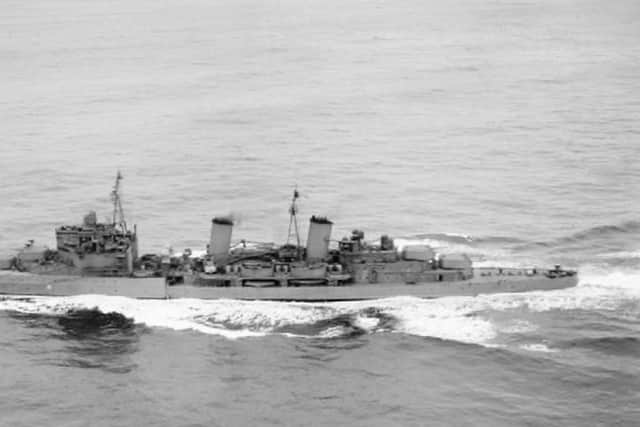Remembering HMS Edinburgh 80 years after she was sunk with £71m of Russian gold on board
The Town-class light cruiser was struck by a torpedo as it returned from Murmansk, where it had led an Arctic Convoy of supply ships carrying ammunition and other goods for Russian forces.
Before setting for home waters HMS Edinburgh was loaded with four and a half tonnes of gold bars, which were packed into wooden crates, in part-payment to the Western Allies for the consignment.
Advertisement
Hide AdAdvertisement
Hide Ad

A torpedo strike on April 30, 1942 led to HMS Edinburgh being towed back to Murmansk but the ship came under attack from three German destroyers on its last voyage on May 2, with the Royal Navy scuttling its ship and sending it to the bottom of the sea for safety.
A total of 58 men, out of a crew of around 900, died on HMS Edinburgh with the service today being held on her sister ship, HMS Belfast, which is moored on the Thames and part of the Imperial War Museum. Relatives of some of the men who died on board are due to attend.
Rob Rumble, lead curator for HMS Belfast, said: “There is always a concern that these stories are forgotten to the midst of time. The Edinburgh was lost in quite a memorable way.
“The ship had both its bow and stern completely blown off by a torpedo but it remained afloat for a day or two. The gold on board was payment for all of the tanks, all the trucks, that had been supplied.”
Mr Rumble said he was not aware if the Germans had prior knowledge to the gold, worth £71m at today’s values, being on board.
He said: “The Germans knew they were in a war of attrition and particularly for the U-Boat captains, all their efforts were focussed on sinking British tonnage. Edinburgh being 12 tonnes made it a very tempting target.”
The value of the bullion in 1942 was £1.2m. Mr Rumbles said the HMS Edinburgh, which was part of the Home Fleet stationed at Scapa Flow, was likely heading to Rosyth or Liverpool with the gold, which would have been then transported by rail to the Bank of England.
"The Edinburgh would have been selected to transport the gold as it was a fast ship, which could travel up to 32 knots, or around 45 miles per hour. One of the strengths was that it was fast, but the pay off was that it was lightly armoured.
Advertisement
Hide AdAdvertisement
Hide Ad"She would have had a detachment of Royal Marines on board to guard the gold. She would been the perfect ship to bring the gold home.
"Unfortunately, there wasn’t enough time or lifting equipment to remove the gold while the Edinburgh was still floating.
"The British tried to salvage the Edinburgh in 1954 as they were worried that the Soviets, by then a Cold War enemy, would try and have a go.
"The wreck was searched and salvaged in 1981 and most of the gold was recovered in 1986.”
The bell of HMS Edinburgh, one of 10 town class cruisers named after British cities in the 1930s, hangs in Edinburgh Castle.
Comments
Want to join the conversation? Please or to comment on this article.
